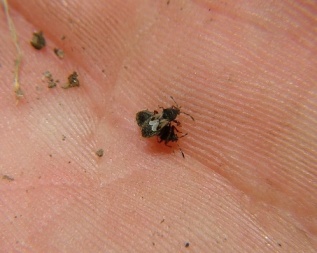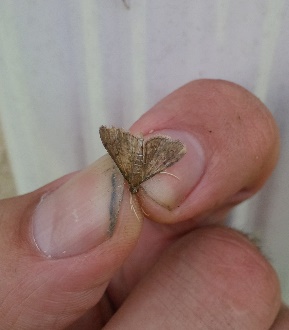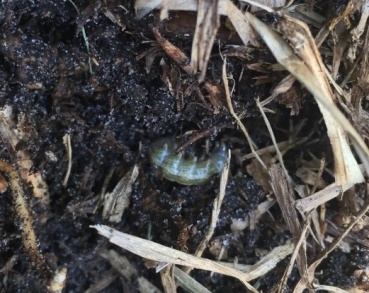Weed Man wants to remind you that NOW is the time to be on the lookout for these two turf damaging summer insects.
Chinch Bugs
It’s hard to believe that such a small insect like the chinch bug can cause so much damage to a lawn in such a short period of time. However, year after year people ask us to come and inspect their lawns because they’ve turned brown and won’t green back up on their own. More often than not, their lawns are suffering from major chinch bug damage.

The secret to chinch bugs’ success is the fact that they are so small and often go unnoticed until it’s too late. Combined with the fact that chinch-damaged turf looks just like drought, which is typical at this time of year, makes these bugs one of the most serious pests to Bluegrass lawns in the north and St. Augustine lawns in the south.
Right now, Weed Man technicians are on the lookout for chinch bug activity. We try to catch them early before any major damage occurs. For those of you who are do-it-yourselfers, keep in mind that if you happen to miss the signs of chinch bug damage, you will eventually be left with large areas that will be thinned out and require repair, which can take a lot of money, time and effort.
Diagnosing Chinch Bug Damage
Here are some hints on how to detect the presence of chinch bugs early enough to prevent or eliminate any damage:
- Chinch bugs typically like any sunny exposed areas, so this is a great place to start looking for any activity, especially if you have brown spots appearing on your lawn.
- Check the boundaries of where the brown areas on your lawn meet the green areas. The damage typically starts off in a small area then grows outward. As the damage increases, it coalesces with other areas, creating larger brown patches on the lawn.
- Look at the base of the plant in the thatch area or where the grass meets the soil, as chinch bugs feed on the crowns of grass plants. A bit of patience may be required to get a glimpse of them. The nymphs are very small and red, while the adults gradually turn black and feature a small white cross mark on their backs.
- An old trick is to grab a soup can and cut both the bottom and the top off. Then pour water into it and see if any of the chinch bugs float to the top. You can definitely try this, but if you follow the steps above you won’t need the soup can trick at all.
Tropical Sod Webworm
Another turf insect pest that is causing extensive damage this summer is the tropical sod webworm. This pest, found primarily along the gulf states, comes in two different forms – moths (adults) and worms (larvae).


Tropical sod webworm larvae feed primarily at night and prefer areas in lawns that are hot and dry during daylight hours. Any areas that are difficult to water are predominantly subject to larval damage, while shaded areas are seldom attacked by the larvae. Damage to the turf occurs as the larvae chew off grass blades and retreat into their protective silken tunnels to consume the grass blade. Injury first appears as small brown patches of closely clipped grass.
Lawns are particularly susceptible to larval damage when the temperatures are hot and lawns are not growing vigorously. Again, our Weed Man technicians are on the lookout for tropical sod webworms, and we try and catch them early before any major damage can occur. Larger lawn areas may be damaged rapidly if control products are not applied, so be on the lookout for this summer lawn invader.
If you have any questions about chinch bugs or tropical sod webworms, Weed Man would be happy to help. Find your local office using our locator map HERE.
Keep those lawns healthy,
Chris
